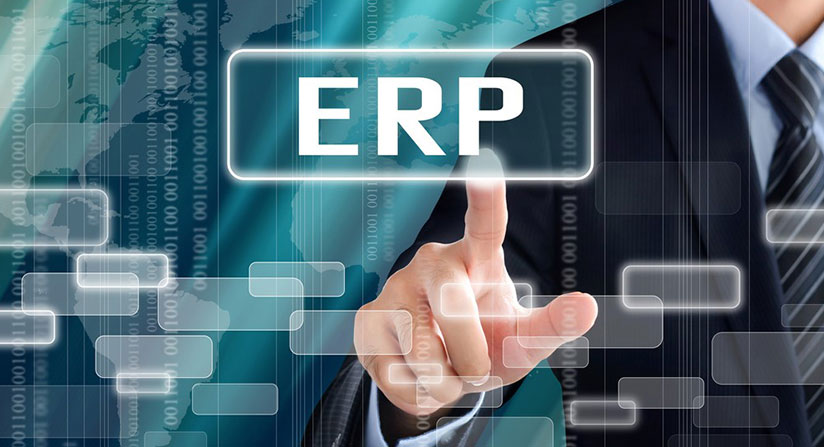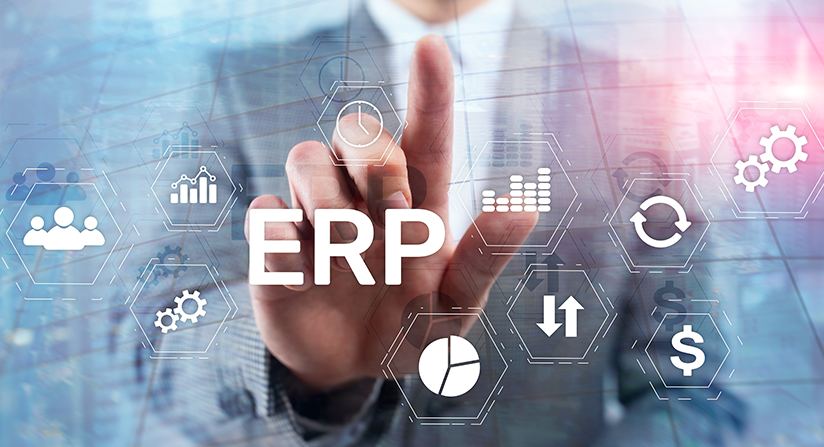An ERP system is arguably the core infrastructure of any manufacturing operation. It connects every function within the organization providing all of the required data to drive the business efficiently, productively, and profitably. It can handle customer orders, customer relationship management, purchasing, production planning, inventory management, accounting functions, HR functions, and it provides comprehensive reporting tools. And with an ERP system in place, every operational activity can be monitored in real-time.
If your current ERP system doesn’t do any of the above, then it’s time for an upgrade. If your current ERP system does all the above, but slowly, inefficiently, and inaccurately, then it’s time for an upgrade. If you run a manufacturing business and
don’t have an ERP system, it’s time to get one.
Sifting through multiple ERP options can be a tough task. There are so many factors to consider including business requirements, integration, ERP implementation hidden costs, functional requirements, TCO & ROI, budget, and resources, etc.
To make your ERP selection easier, we created 10 steps that will help guide you on the path to choosing the right ERP system for your manufacturing business.
Step 1 – Identify the problems you need to solve
For example, you might be managing your inventory on spreadsheets and manually transferring your inventory data to your accounting system. It takes time, it’s error-prone, and it’s an unproductive use of staff who could be adding value elsewhere. The solution would be to have a system that seamlessly integrates inventory and accounting, which an ERP system can provide.
But don’t stop there. Undertake a review of all your business processes. Are there any processes that require manual or double entry? Are there any that could be improved with automation? Do you need faster and better reporting? Do you struggle to meet industry compliance requirements?
Summarize the results with a cost-benefit analysis. Do the benefits outweigh the cost? If so it’s time for step 2.
Step 2 – Get buy-in from the key stakeholders
Executive management and key stakeholders need to be motivated to change and participate in the evaluation process. The cost-benefit analysis undertaken in step 1 will be of considerable help to get them on board.
It is also a helpful argument when persuading stakeholders that ROI does not come purely from cost savings. For instance, when processes are improved through automation, employees can work smarter, and tedious manual tasks are eliminated, providing greater employee satisfaction, retention, and improved productivity.
Step 3 – Appoint an internal product champion
Appoint a stakeholder and someone motivated by the opportunity to play a pivotal role in onboarding a new ERP system. Their excitement will inspire others to become excited and that enthusiasm will be essential to reaching a successful implementation.
Step 4 – Make sure the system is “future-proofed”
As mentioned previously, ERP is the core infrastructure and needs to be resilient enough to grow with the company. Look for a flexible, open, and modular system. It needs to play well with others, for example integrating with suppliers for Just in Time (JIT) manufacturing or using Electronic Data Interchange (EDI) to integrate with customers.
Is the system modular enough to accept new functionality based on the latest manufacturing advances? Is the system scalable? Can it grow as your business grows?
Step 5 – Make sure the system offers mobile access
Is the mobile access just a link to a desktop web browser or is it an application built from the ground up and designed to complement the desktop version? The latter is what to look for. You want users to be as productive on smartphones and tablets as they are on desktops in the office.
Step 6 – Make sure the system is easy to use
A manufacturing ERP system will have a wide range of users from shop floor to top floor. The interface must be logically structured and intuitive to use. A well-designed interface will result in increased employee satisfaction and increased productivity.
User Interface (UI) and User Experience (UX) matters a lot while selecting an ERP solution. A user-friendly ERP with well-designed dashboards promotes employee efficiency and better productivity.
Step 7 – Choose your deployment option wisely
You may be offered a choice of on-site, cloud, or hybrid deployment solution. Cloud solutions have matured to the point where the benefits far outweigh those of an on-site solution.
- Upfront expense is minimized as cloud-based systems usually operate on a pay-as-you-go scenario
- IT staff overhead is minimal as maintenance and upgrades are handled by the vendor and the software is always current
- Cloud-based systems are infinitely scalable
Step 8 – Verify the training and support options the vendor provides
Have your vendor initially train a handful of key personnel throughout the organization. They will become internal trainers and support staff. Their efforts will complement the vendor’s efforts for better training availability. Develop a training schedule with your vendor and commit your staff’s time to the training. There is no point in investing time and resources into implementing a new system if nobody knows how to use it!
Step 9 – Choose a vendor who understands your business
Do not choose a vendor who overwhelms you with tech-speak when selling the benefits of their solution. You want to work with a vendor who understands the challenges of manufacturing. Someone who knows the problems you are trying to solve and can frame their solution accordingly.
Step 10 – Make your decision!
Evaluate potential hidden expenses in ERP implementation, finalize contract negotiation, and finally estimate the go-live date.
ERP selection criteria should be clearly defined before you embark on the selection journey. Moreover, make sure to focus on the ERP assessment approach.
What are the questions to ask when buying ERP software?
- What modules do you have?
- Do you support mobile access?
- Can this solution be easily integrated with other tools?
- Do you support advancing technologies?
- Do you offer an industry-specific solution?
- Are there limitations on the number of users?
Download our product brochure to see how OptiProERP, an end-to-end manufacturing ERP, combines financial management, supply chain tracking, CRM, and industry-specific solutions in one seamless system and gives you the foundation to scale and compete in today’s digital world. To know more about what you need to consider when selecting an ERP system, get in touch with our ERP implementation team.
Follow Us






